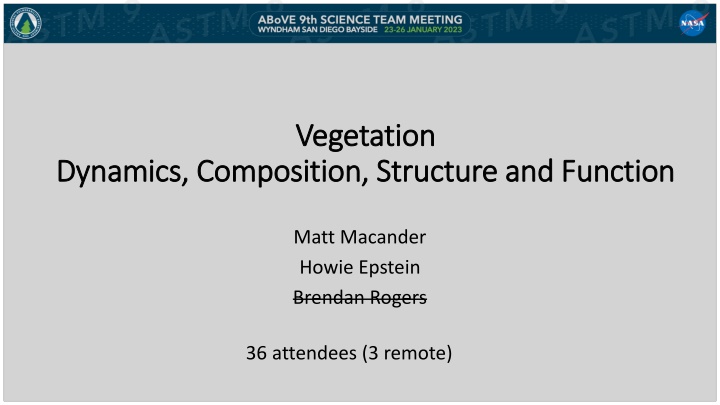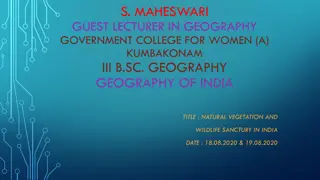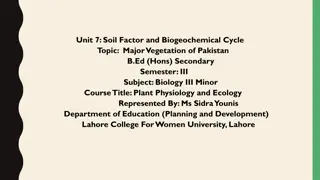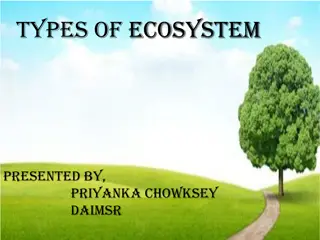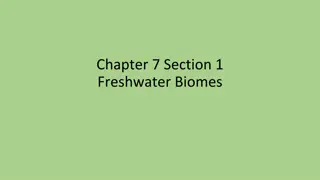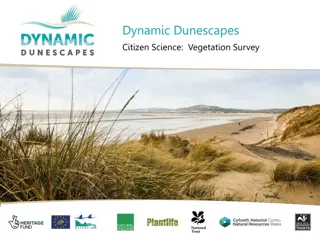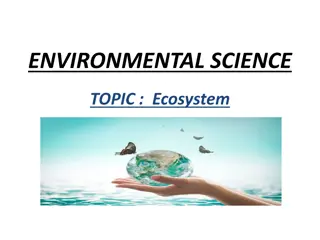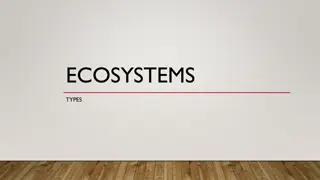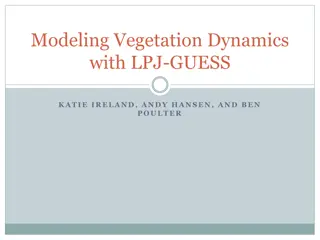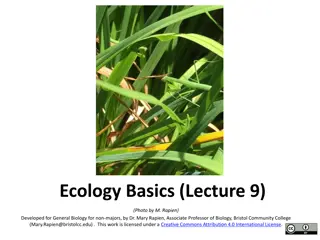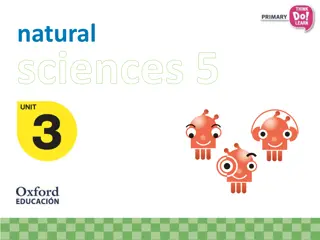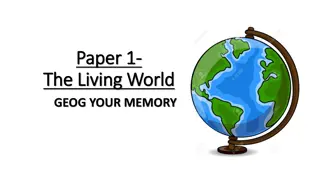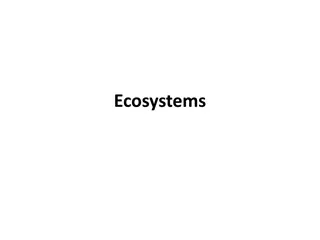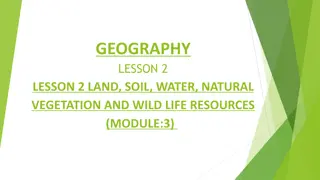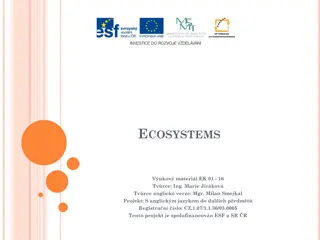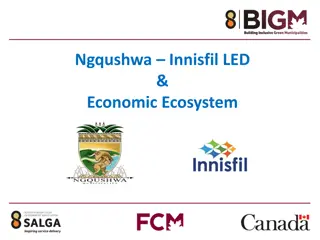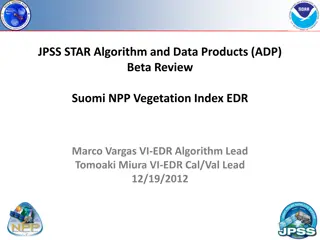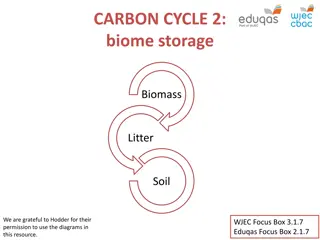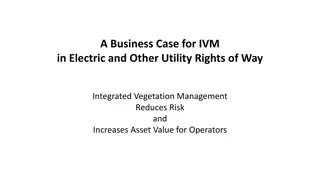Insights into Vegetation Dynamics and Function in Ecosystems
Explore the complexities of vegetation dynamics, composition, structure, and function in various ecosystems through discussions on disturbance, wetlands, hydrology, and ecosystem services. Engage in ongoing dialogues about vegetation classification schemas and practical methods like traits mapping to characterize ecosystem function. Delve into mult-disturbance synthesis, successional trajectories, and resilience of vegetation post-disturbance, with a focus on refining resilience maps in limited areas.
Download Presentation

Please find below an Image/Link to download the presentation.
The content on the website is provided AS IS for your information and personal use only. It may not be sold, licensed, or shared on other websites without obtaining consent from the author.If you encounter any issues during the download, it is possible that the publisher has removed the file from their server.
You are allowed to download the files provided on this website for personal or commercial use, subject to the condition that they are used lawfully. All files are the property of their respective owners.
The content on the website is provided AS IS for your information and personal use only. It may not be sold, licensed, or shared on other websites without obtaining consent from the author.
E N D
Presentation Transcript
Vegetation Vegetation Dynamics, Composition, Structure and Function Dynamics, Composition, Structure and Function Matt Macander Howie Epstein Brendan Rogers 36 attendees (3 remote)
Carbon Disturbance Vegetation Dynamics, Composition, Structure, and Function Wetlands Hydrology Ecosystem Services Permafrost
Past and Near Completion Syntheses Multi-Disturbance synthesis (Foster et al.) Gridded LVIS Vegetation Structure (Montessano and Macander) Dynamic Vegetation Model comparison (Hefernan and Epstein)
Vegetation and PFT Classification Schemas Ongoing discussion since before Phase 1 Now is the time window to have this discussion Don t expect agreement or a perfect solution Local concepts generally best fit locally Reference international , national (USNVC) standards and other groups (AGC Veg WG)
Vegetation Structure, Function, Traits Guillermo suggests Reverse engineer land cover from canopy height, canopy cover, leaf form and longevity (similar to AK-VEGMap) Townsend acknowledges that from management perspective traits map alone are not very helpful Combine with vegetation structure & leaf form, phenology, inundation, land cover... Traits as a practical method to characterize ecosystem function over large areas when accurate species mapping is impractical Encourage modelers to include some traits directly, not just in PFT lookups
Vegetation Disturbance and Successional Trajectories Multi-Disturbance Synthesis was broad but shallow (point-based) Lake Drainage Extreme Climate Events Some new disturbances are emphasized in Phase 3 Beaver Engineering, Retrogressive Thaw Slumps Utilize existing time-series products (land cover, PFT cover) Also assess agreement among products
Vegetation Resilience Focus of Liu s P3 project (and ABoVE overall) Capacity to recover after disturbance Measurables include vegetation index measurements Recovery of land cover, plant cover, traits, AGB and carbon Skepticism of some global resilience analyses (e.g. step change c. 2000) ABoVE is a good opportunity to refine and ground-truth resilience maps with a limited area and concentration of expertise
New Synthesis (with Spectral Imaging) Vegetation Composition from AVIRIS-NG Latest/Best AVIRIS-NG surface reflectance from JPL (ISOFIT Alg) University of Wisconsin to apply BRDF and Terrain Correction using best available DEM Already used to develop trait maps (include traits as predictors) Convert to ARD (standard north-up projection, scaled 16bit) Make available on ASC, perhaps GEE Community Catalog Intersect with domain-wide UAS PFT mapping, spectral and other field mmts (100+ AVIRIS strips, Yang/Lara/Nelson/Belke-Brea/Macander) Used to support local/project efforts and AVIRIS collection-wide
Next Steps Strong support to resume monthly calls Classification scheme discussion Spectral/Vegetation Synthesis Short presentations with time for other discussion Potential additional syntheses Disturbance & Resilience Co-lead opportunity
